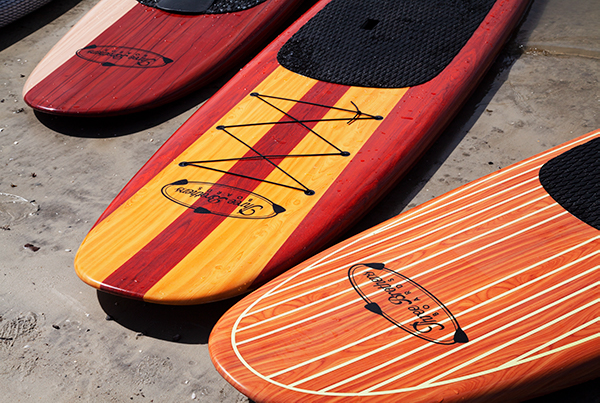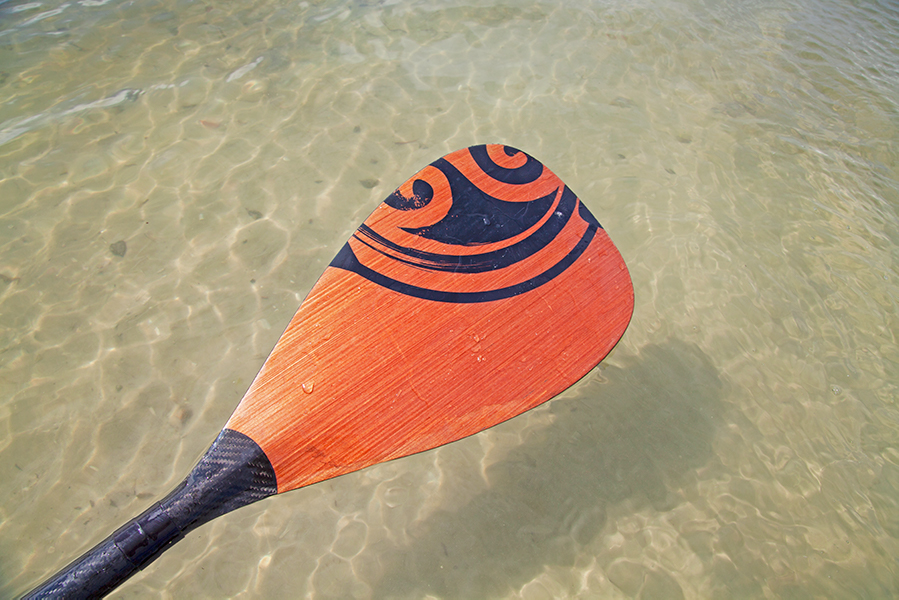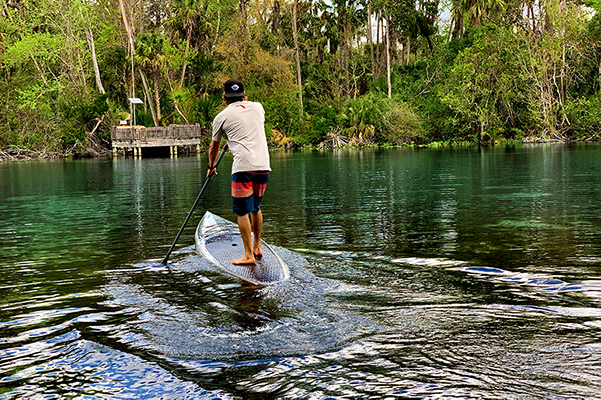
Once you get to experience riding a paddleboard, you’ll want to go purchase one immediately. The problem is, how do you choose what kind to get?
This depends on what you’re wanting to do and get out of the stand up paddle board, or SUP. The main reasons to purchase a SUP are fun/fitness or touring/racing. When purchasing a board for fun and fitness, board usage is more geared towards leisure. Most beginners will fall into this category and these boards are for all around use. Touring and racing boards are great for covering long distances and reaching high speeds. To have better efficiency in the water, the hull type, volume, length, width, core materials and fins are customizable.
SUP Hull Types
There are two hull types for SUPs: planing or displacement. A planing hull is flat and wide, which is similar to a surfboard. This type of hull is great for beginners because of the stability and versatility. This is a great type of board for a person who wants one board to do it all. The displacement hull is best for paddling long distances and racing. This is due to its pointed nose or bow, which is similar to that of a kayak. This enables the board to slice through water to improve efficiency.
SUP Length
The three classifications of SUPs are short, medium, and long boards. Short boards are under 9 feet and are ideal for surfing. Medium boards are 9 feet to 12 feet and this size of board is great for all around use. Long boards are usually 12’6” feet or greater. Boards this large are used for racing or touring as they are faster and tend to track straighter.
SUP Width
Boards are usually made up to 36 inches wide to accommodate a variety of body types. The wider the board, the more stable they will be. If you have a more narrow board, then the board will typically be faster.
SUP Core Materials
The most common type of core material is EPS foam which is a foam core wrapped with fiberglass and epoxy. There are some boards that don’t have a core, this is called hollow core. This can increase performance and save weight. A foam that is used on entry level boards and is a less common type than the EPS foam is polyurethane foam. The last core type is an inflatable. These don’t actually have a physical core, but rather will use air. These boards are very durable, light to carry , and easy to store.
SUP Fins
Some variations of fins include: the large single fin, 3-fin setup, race fins, or fins for inflatable SUPs. Each of these fins have different pros and cons when determining what your wanting in a STP
Now that you have a little more information about SUPs, you can figure out what kind of board will work best for you! To browse the Three Brothers line of stand-up paddleboards, click here.




